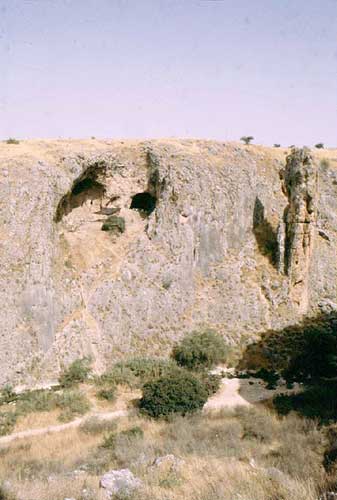|
Other Archaeological Sites / The Neolithic of the Levant (500 Page Book Online) Amud Cave in Israel
The material from Amud Cave in Israel consists of the fragmentary remains of a male along with 15 other specimens two-thirds of which are children or infants. This material has been dated by thermoluminescence to approximately 45-47 thousand years old. Amud 1 is the most complete specimen consisting of just about the entire cranium with most of the postcrania present. This individual was a male -- died in his mid 20's -- was approximately 174 cm tall and has the largest cranial capacity of any Levant hominid at 1740 cc. While these remains are clearly Neanderthal these specimens show more affinity to the Shanidar Neanderthals rather than the Classic European Neanderthals. For example when compared to the European Neanderthals and the Skhul Homo sapiens the Amud material actually shows greater affinity to the sapiens of Skhul than to the European Neanderthals ...
Journal Articles
(1) A Neandertal Infant from Amud Cave in Israel
(2) The Amud Man and His Cave Site (1970) |
